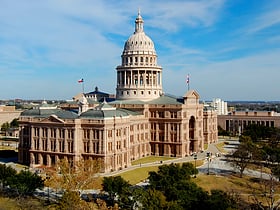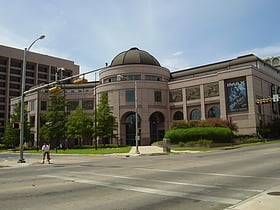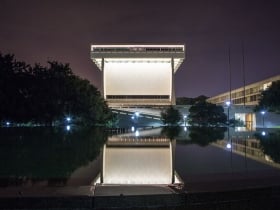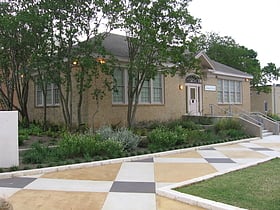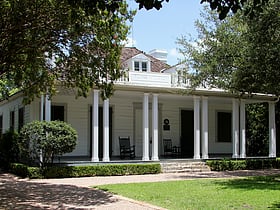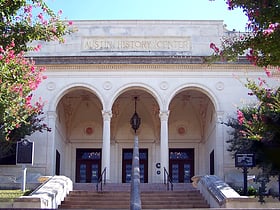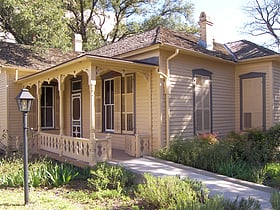Austin: History Museum
Places and attractions in the History museum category
Categories
- Museum
- Park
- History museum
- Shopping
- Art museum
- Bridge
- Church
- Theater
- Concerts and shows
- Historical place
- Sport
- Sport venue
- Nightlife
- Outdoor activities
- Specialty museum
- Art gallery
- Library
- Shopping centre
- Cinema
- View point
- Event space
- Monuments and statues
- Natural attraction
- Gothic Revival architecture
- Tower
- O. Henry
- Neighbourhood
- Skyscraper
- Cemetery
- Vernacular architecture
- Greek Revival architecture
- Arenas and stadiums
Texas State Capitol
Home to the state legislature The Texas State Capitol, located in the heart of Austin, is a prominent landmark that serves as the home of the Texas legislature and the office of the governor. Completed in 1888, this historic structure is an architectural marvel, renowned for its distinctive...
Bullock Texas State History Museum
The Bullock Texas State History Museum is a history museum in Austin, Texas. The museum, located a few blocks north of the Texas State Capitol at 1800 North Congress Avenue in Austin, Texas, is dedicated to interpreting the continually unfolding "Story of Texas" to the broadest...
Lyndon Baines Johnson Library and Museum
Exhibits about President Johnson The Lyndon Baines Johnson Library and Museum, also known as the LBJ Presidential Library, is the presidential library and museum of Lyndon Baines Johnson, the 36th president of the United States.
George Washington Carver Museum
The George Washington Carver Museum and Cultural Center is a museum and cultural center in east Austin, Texas, housed in the former George Washington Carver branch of the Austin Public Library. Named in honor of George Washington Carver, the facility has been listed on the National Register of Historic Places since 2005.
French Legation
The French Legation is a historic legation building in eastern Austin, Texas, built in 1841 to represent the French government in the new Republic of Texas. It is among the oldest extant frame structures in Austin. The building and its surroundings were added to the National Register of Historic Places in 1969.
Dolph Briscoe Center for American History
The Dolph Briscoe Center for American History is an organized research unit and public service component of The University of Texas at Austin named for Dolph Briscoe, the 41st Governor of Texas.
Austin History Center
Collection of Austin cultural history The Austin History Center is the local history collection of the Austin Public Library and the city's historical archive. The building opened as the official Austin Public Library in 1933 and served as the main library until 1979, when library functions moved to the John Henry Faulk Library, a newer facility next door.
Texas Governor's Mansion
The Texas Governor's Mansion is a historic home for the governor of Texas in downtown Austin, Texas. Designed by prominent architect Abner Cook, it was built in 1854 and has been the home of every governor since 1856.
O. Henry Museum
The William Sydney Porter House or O. Henry House is a historic structure in Downtown Austin, Texas. William Sydney Porter, better known as the author O. Henry, lived there between 1893 and 1895.
The Contemporary Austin
The Contemporary Austin, originally known as the Austin Museum of Art, is Austin, Texas's primary contemporary art museum, consisting of two locations and an art school.
Laguna Gloria
The Contemporary Austin - Laguna Gloria, formerly known as the AMOA-Arthouse at Laguna Gloria, is the former home of Clara Driscoll and site of a 1916 Italianate-style villa on the shores of Lake Austin in Austin, Texas.
Texas Military Forces Museum
The Texas Military Forces Museum is a history museum in Austin, Texas. It is hosted by the Texas Military Department at Camp Mabry and is part of the United States Army Historical Program. It is open to the public Tuesday-Sunday from 10am-4pm CST. Admission is free.
Neill–Cochran House
The Neill–Cochran House Museum is a historic home in north-central Austin, Texas. Master builder Abner Cook designed and built the house in 1855 as a suburban estate many years before the surrounding area was settled by other homes and businesses. The two-story Greek Revival home features prominent Doric columns and Mr.
Map

